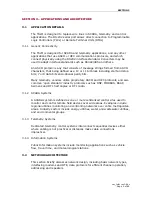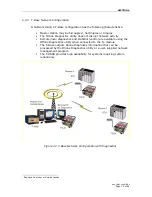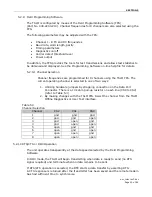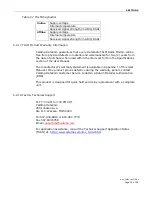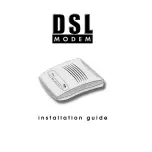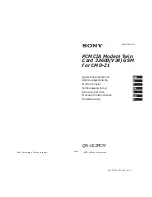
SECTION 3
um_tslm rev3.doc
Page 9 of 62
S
S
E
E
C
C
T
T
I
I
O
O
N
N
3
3
–
–
A
A
P
P
P
P
L
L
I
I
C
C
A
A
T
T
I
I
O
O
N
N
S
S
A
A
N
N
D
D
A
A
R
R
C
C
H
H
I
I
T
T
E
E
C
C
T
T
U
U
R
R
E
E
3.1
APPLICATION DETAILS
The TSLM is designed to replace wire lines in SCADA, telemetry and control
applications. The RS-232 serial port allows direct connection to Programmable
Logic Controllers (PLCs) or Remote Terminal Units (RTUs).
3.1.1
Generic Connectivity
The TSLM is designed for SCADA and telemetry applications, and any other
applications that use ASCII or HEX communications protocols, and which
connect physically using the RS232 interface standard. Converters may be
used to adapt interface standards such as RS422/485 and others.
An ASCII protocol is any that consists of message strings formed from ASCII
characters, that being defined as a 10 or 11 bit block including start and stop
bits, 7 or 8 data bits and optional parity bits.
Many telemetry vendors utilize proprietary ASCII and HEX protocols, and also
common ‘open standard’ industry protocols such as DNP, MODBUS, BSAP,
Seimens and DF1 half duplex or DF1 radio.
3.1.2
SCADA Systems
A SCADA system is defined as one or more centralized control sites used to
monitor and control remote field devices over wide areas. Examples include
regional utilities monitoring and controlling networks over entire metropolitan
areas. Industry sectors include energy utilities, water and wastewater utilities,
and environmental groups.
3.1.3
Telemetry Systems
Dedicated telemetry control systems interconnect sequential devices either
where cabling is not practical or distances make cable connections
impractical.
3.1.4
Information Systems
Public Information systems include monitoring applications such as vehicle
flow, travel time, and meteorological stations.
3.2
NETWORK ARCHITECTURE
This section briefly discusses network design, including basic network types,
interfacing modems and DTE, data protocols for efficient channel operation,
addressing and repeaters.









